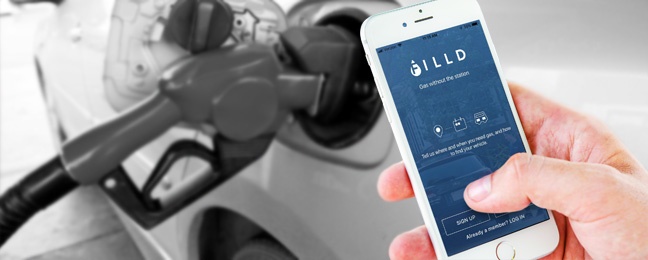

Oct 30 2018
We live in an age where everything is on demand. Binge watching your favorite TV shows when and where you want, ordering almost any product online and having it delivered on your doorstep within 48 hours, and arranging for transportation to arrive within 5-10 mins from the palm of your hand are all daily occurrences around the country. More and more on-demand business models are created to support this convenient and instantaneous lifestyle our society has become accustomed to.
One of the more recent on-demand services that I find particularly interesting is on-demand gas delivery. There are a few startups on the market, mainly on the west coast, that have built their businesses around this model, such as Filld, Booster, and Yoshi. Some of the on-demand roadside assistance platforms, including Urgent.ly, also offer this service as part of their solution.
Although the idea of having someone come fill up my tank while I’m at work or in the comfort of my home sounds enticing, I can’t help but wonder if this is a business model that will stand the test of time. Here are a few questions that I had:
Is scheduling a driver to come fill your tank during a given block of time more convenient than driving to the nearest gas station and filling up yourself? Stopping at a gas station doesn’t require any planning and can be done on your way to another destination. However, if you’re crunched for time, it can lead to missed appointments, or even worse, running out of fuel. From that perspective, on-demand gas delivery can certainly be more convenient, given the vehicle owner remembers to book a gas delivery appointment.
Drivers complain when the price of gas goes up by 5 cents per gallon. How many drivers are willing to pay a delivery fee or higher cost per gallon to avoid the gas station? In areas where gas stations are out of the way or in congested areas where stopping at the gas station can be a hassle, this service would make sense. However, living in the suburbs, gas stations seem to be at every corner and there’s rarely a moment where all the pumps are taken.
Many of the major automakers have announced plans to phase out traditional internal combustion engines and exclusively manufacture all-electric and hybrid vehicles in the next few years to meet strict emissions requirements. Here is an article from Mashable detailing the current plans from some of these automakers.
As we trend toward more electric and hybrid vehicles and fewer internal combustion engines, will there be enough demand for gas delivery? Or could more electric and hybrid vehicles lead to a decreased need for gas stations and increased opportunity for on-demand gas delivery services? One source predicts that these gas delivery companies might be the new standard and gas stations that don’t adapt will sell their property to developers. Either way, the decreasing demand for gas is certainly something on-demand gas delivery businesses will need to consider.
Many of on-demand gas delivery businesses have taken these concerns into account and have found ways, other than relying solely on individual customer gas fills ups, to be profitable. Here are some of their creative ideas:
The most effective way for on-demand gas delivery businesses to make money is by scheduling multiple appointments in the same location. Setting up programs with office parks, apartment and condo complexes, gated communities, etc. that promote fill-ups for their residents or employees has been effective for these businesses. With this method, customers often receive free delivery, special pricing, or rewards.
Rather than just delivering gas to individual customers, or even multiple customers through an enterprise program, working out deals with major fleets such as car rental companies, car sharing, and government vehicles is another way to guarantee consistent business with limited travel. Many gas delivery businesses are relying heavily on fleets to impact their bottom line.
A few of the top on-demand gas delivery companies, including Yoshi and Booster, offer such additional services as car washing and/or detailing, oil changes, tire fill-ups, window cleaning, and wiper blade replacements. Including these complimenting services not only increases the value for customers but also gives these businesses a competitive edge while increasing the average dollar value per appointment.
For procrastinators that wait until the last minute to fill up their tanks and find themselves with a nearly empty tank in the morning, this service won’t help. And if there is a gas station close by with little friction for filling up, it may be difficult to capture the attention of these customers. While the profit margins can be tight when working with just individual customers, on-demand gas delivery businesses can still be successful. The key to success is serving densely populated areas, offering add-on services, and working with enterprise and fleet accounts.
I’m curious to see where these businesses end up in 20 or so years when the majority of vehicles on the road run on electric. Stay tuned.